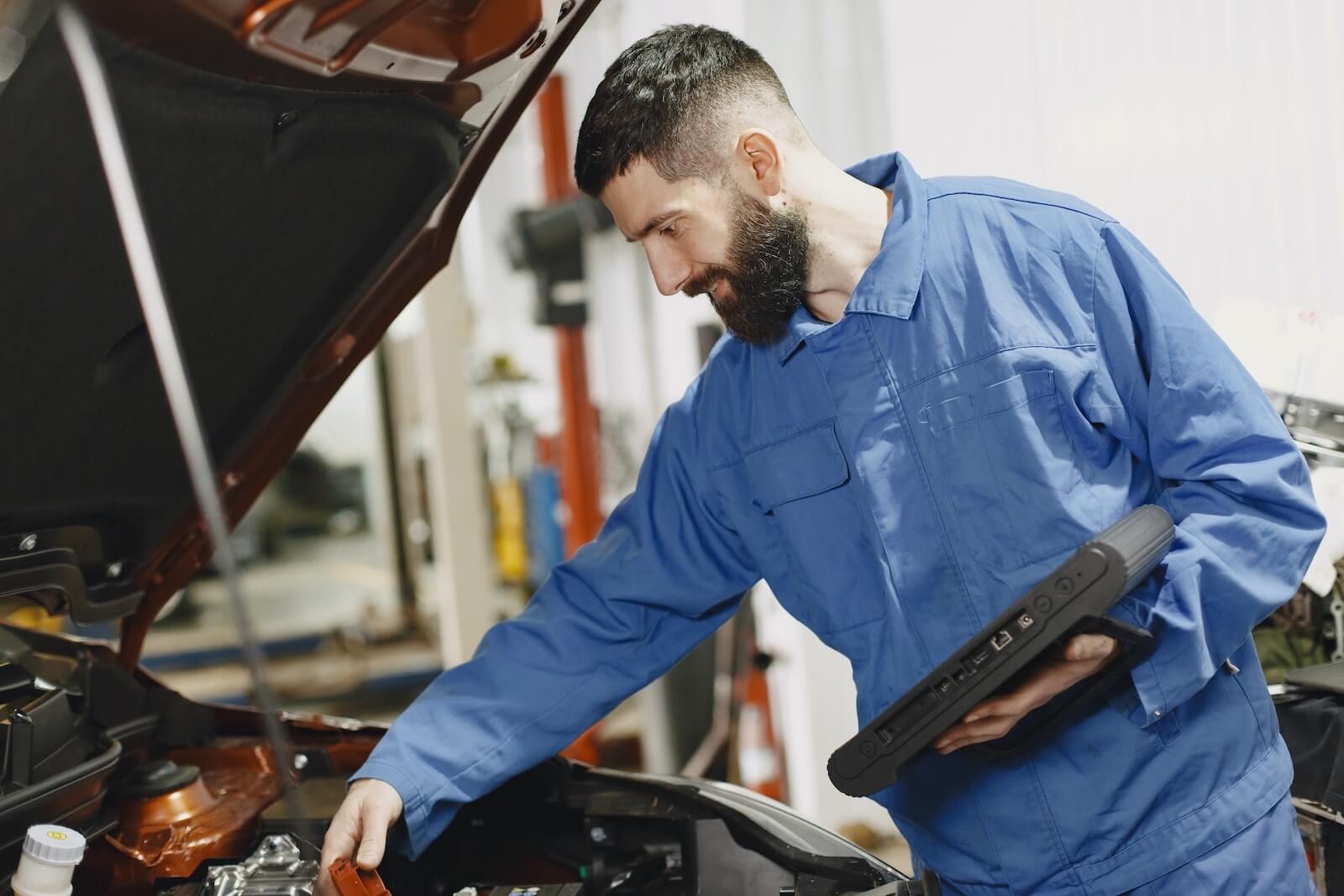A DOT (Department of Transportation) inspection for a commercial motor vehicle (CMV) is a necessary, annual inspection that certifies vehicles to be on the road. DOT inspections are often conducted by a qualified inspector in accordance with regulations established by the DOT’s Federal Motor Carrier Safety Administration (FMCSA). There are various levels of DOT inspections, which you can learn about more here, so it’s best to always be prepared. Inspectors can perform random inspections at weight stations, and state troopers with DOT inspection training can conduct inspections on the side of the road.
However, rather than let a random inspection catch your fleet vehicles by surprise, it’s possible to schedule a DOT inspection. This allows you to come prepared, ensuring you pass the inspection with flying colors. To learn more about how to schedule a DOT inspection and how to prepare for one, continue reading below.
Schedule an Inspection
While random DOT inspection can be conducted by certified inspectors and state troopers, you can also choose to schedule an appointment to have your CMV inspected, which increases the chances of passing the inspection. To do this, find an authorized DOT inspection facility near your location. These facilities are typically truck repair shops, service stations, or specialized inspection stations that have certified inspectors and equipment for conducting DOT inspections. You can often find authorized facilities by searching online, contacting local trucking associations, or asking other trucking professionals for recommendations.
If you’re scheduling an inspection at a repair facility, contact them in advance to arrange an appointment. Make sure they are authorized to perform DOT inspections. With Fleet Advisor’s mobile DOT inspection service, you don’t have to go anywhere; we’ll come to you. You can schedule DOT inspections for your entire fleet during off-hours, eliminating the need for fleet vehicle downtime that can cost you money.
Prepare Your Documentation
While not all DOT inspection levels focus on the paperwork, some, such as level 3 inspection, focus primarily on the paperwork. Gather all necessary documents and paperwork, including your driver’s license, medical certificate, vehicle registration, insurance documents, and any other relevant records. Ensure your vehicle’s maintenance and inspection records are up-to-date and readily accessible.
Vehicle Preparation
Before the inspection, perform a pre-trip inspection of your CMV to identify and address any obvious issues. This includes checking lights, brakes, tires, fluids, and other essential components.
Attend the Inspection
For a majority of DOT inspection levels, a driver’s presence is required. If you’ve scheduled an inspection at a repair facility, bring your CMV to the designated location at the agreed-upon time.
If you encounter a roadside inspection, cooperate with law enforcement officers and follow their instructions. In some instances, you may be asked to step aside or leave the inspection facility before the inspector can proceed.
Inspection Process
The inspector will typically follow the guidelines for the level of inspection that is appropriate for your situation. This could be a Level I (comprehensive), Level II (driver), or Level V (cargo securement) inspection, as previously mentioned.
During the inspection, the inspector will check various aspects of your vehicle and/or driver compliance, depending on the level of inspection being conducted. Cooperate fully with the inspector, providing requested documents and answering any questions truthfully.
Receive Inspection Results
After the inspection is completed, you will receive a written report detailing the findings. If your CMV passes the inspection, you’ll receive a sticker or certification indicating compliance.
If your CMV fails the inspection, you’ll be provided with information on the violations and the required corrective actions.
Address Violations
If any violations or issues are identified during the inspection, you may be required to address them before continuing your journey. This could involve making necessary repairs, adjusting your cargo securement, or rectifying any compliance-related concerns.
Be prepared to follow instructions from the inspector and ensure all violations are corrected to their satisfaction.
Follow-Up
Ensure that you address any identified violations promptly and keep records of the repairs or corrective actions taken.
If you had a Level II driver inspection, make sure your driver-related documents and records are always in compliance with DOT regulations.
Schedule Your Commercial DOT Inspection With Fleet Advisor
Remember that maintaining your CMV in good working condition and staying in compliance with DOT regulations is essential for both safety and legal reasons. Regularly scheduled maintenance and self-inspections can help you identify and address issues before they become significant problems during a DOT inspection.
If your CMV is due for a DOT inspection, it’s time to contact the experts at Fleet Advisor. You can schedule an appointment that works best for you, and we’ll send a certified inspector out to your location in the Denver metro area. Give us a call at (303) 710-5213 to get started.
Go to shop for all your fleet maintenance needs in Denver and the surrounding areas. Our years of experience have led us into this venture, a one-stop shop for all your fleet’s needs.


